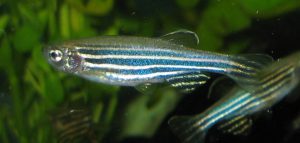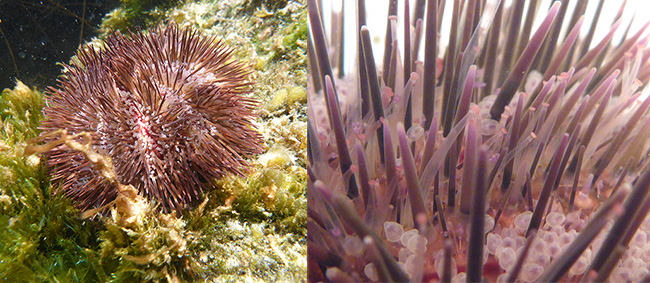Name: Danio rerio
Hometown: Freshwater ponds and rivers of India, Nepal, and neighboring countries
Occupation: Research
Long-term goal: Solving the basic mysteries of life
Work site: More than 600 science labs worldwide

That’s me and some other zebrafish, swimming in a tank in one of the more than 600 labs around the world that use us to study embryo development, genetics, and all kinds of human diseases. Credit: Wikimedia Commons, Azul.
Apart from the tell-tale stripes that give me my nickname, zebrafish, I look a lot like your standard minnow swimming in the shallows of any pond, lake, or river. But I like to think I’m more important than that. In fact, researchers around the world have turned to me and my extended family to understand some of the most basic mysteries of life. From studying us, they’re learning about how embryos develop, how cancer works, and whether someday humans might be able to rebuild a heart, repair a spinal cord injury, or regrow a severed limb.
Why us? Because zebrafish are pretty special and researchers think we’re easy to work with. First, unlike your standard lab mouse or rat, we lay lots of eggs, producing baby fish that grow up fast. We develop outside our mothers and go from egg to embryo to free-swimming larva in just 3 days (check out this video  of how we grow, cell by cell, during the first 24 hours). Within 3 months, we’re fully mature.
of how we grow, cell by cell, during the first 24 hours). Within 3 months, we’re fully mature.
Not only do zebrafish moms have many babies at the same time, and not only do these babies grow up quickly, but our eggs and embryos are see-through, so scientists can literally watch us grow one cell at a time. We stay mostly transparent for a few weeks after hatching. That makes it super easy for scientists to monitor us for both normal and abnormal development. In fact, scientists have learned how to turn off the genes that give our skin its color. These zebrafish, named casper, after the “friendly ghost” of cartoon fame, stay semi-transparent, or translucent, through adulthood.
And last, but certainly not least, did I mention that we can regenerate? If parts of my body are damaged, even to a significant degree, they can regrow. This holds true for my heart, fins, spinal cord, and even brain tissue. Our regenerative capacity is seemingly unlimited; my caudal fin, for example, can grow back dozens of times. Continue reading “Zebrafish Scrapbook”
 Viravuth (“Voot”) Yin, associate professor of regenerative biology and medicine at MDI Biological Laboratory and chief scientific officer at Novo Biosciences, Inc., in Bar Harbor, Maine. Credit: MDI Biological Laboratory.
Viravuth (“Voot”) Yin, associate professor of regenerative biology and medicine at MDI Biological Laboratory and chief scientific officer at Novo Biosciences, Inc., in Bar Harbor, Maine. Credit: MDI Biological Laboratory.




